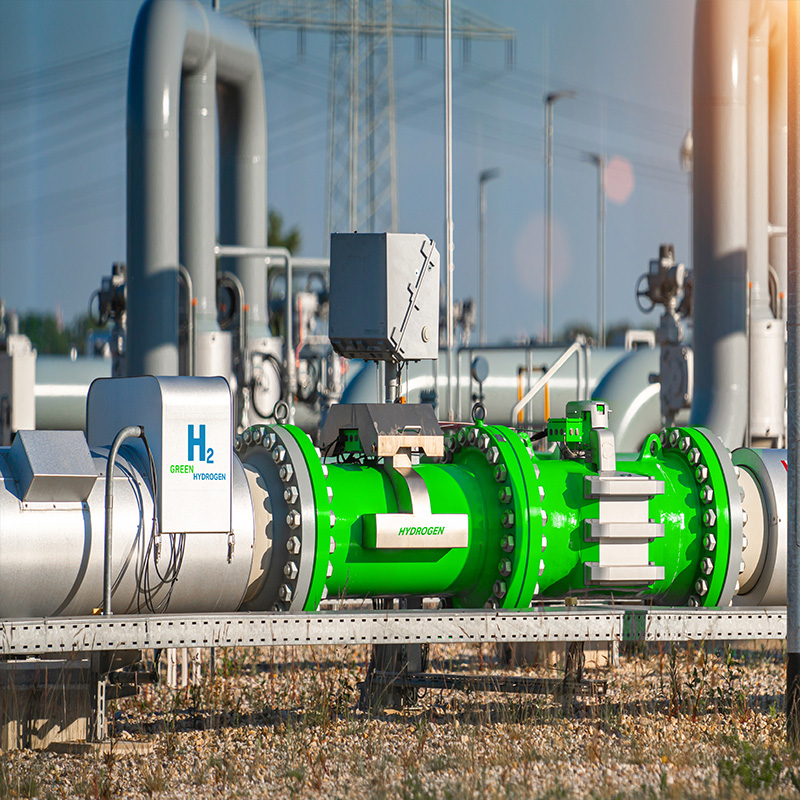
Green Hydrogen: Creating A Cost-Competitive Alternative to Fossil Fuels
As global economies strive to reduce carbon emissions and transition to renewable energy sources, the potential of green hydrogen as a cost-competitive alternative to fossil fuels has gained significant attention. Green hydrogen, produced through the process of electrolysis using renewable electricity, holds immense promise in decarbonizing hard-to-electrify sectors such as long-haul transportation, aviation, and heavy manufacturing. This article delves into the factors influencing the cost competitiveness of green hydrogen and explores the advancements and challenges in its widespread adoption.
The Rising Demand for Green Hydrogen
The demand for hydrogen continues to rise, with an estimated 87 million metric tons consumed globally in 2020. Projections indicate that this demand could grow exponentially, reaching 500-680 million metric tons by 2050. However, it is crucial to note that over 95% of current hydrogen production is derived from fossil fuels, making it imperative to transition to green hydrogen to mitigate carbon emissions effectively.
Factors Affecting the Cost of Green Hydrogen
Several key factors contribute to the cost competitiveness of green hydrogen, including production, transportation, and end-use efficiency. The cost of green hydrogen production is directly influenced by the price of renewable energy, electrolyser technology, and the availability of water for the electrolysis process. Currently, green hydrogen is more expensive than its fossil fuel-based counterparts, known as blue hydrogen. However, falling renewable energy prices, advancements in electrolyser technology, and economies of scale are expected to drive down the cost of green hydrogen in the coming years.
Overcoming Storage and Transportation Challenges
One of the major challenges in the widespread adoption of green hydrogen is the safe and affordable storage and transportation of the fuel. Hydrogen's low energy density makes storage and transportation complex, particularly for applications like aviation. To address this, researchers are exploring the combination of hydrogen with carbon to produce liquid synthetic hydrocarbon fuels that are easier to handle and transport. These liquid fuels can serve as cleaner replacements for gasoline or diesel, offering a viable solution for sectors where hydrogen alone may pose logistical challenges.
Green Hydrogen as an Energy Storage Solution
Another significant advantage of green hydrogen is its potential to store energy generated from renewable sources. This stored energy can be converted back into electricity when needed, providing a reliable source of power during periods of low renewable energy generation or high demand. The ability of green hydrogen to store and release energy adds resilience to renewable power systems and contributes to grid stability.
Government Initiatives and Industry Investments
Governments and industry stakeholders worldwide are recognizing the potential of green hydrogen and taking significant steps to support its development. The International Energy Agency (IEA) predicts that hydrogen could account for over 10% of global energy needs by 2050. To achieve this, substantial investments in infrastructure, research, and development are required. Europe, for instance, has set ambitious targets for electrolysis capacity, aiming for 40 gigawatts by 2030.
Hydrogen Valleys: Regional Initiatives for Green Hydrogen
One notable approach to promoting the adoption of green hydrogen is the concept of "Hydrogen Valleys." These regional projects aim to establish electrolysis plants in areas where multiple industries can benefit from hydrogen utilization. Hydrogen valleys are emerging across Europe, with collaborations between industrial sectors, renewable energy providers, and governments. These initiatives demonstrate the potential for green hydrogen to decarbonize industries and create sustainable economic growth.
The Role of Innovation and Research
Innovation and research play a crucial role in driving down the cost of green hydrogen and improving its efficiency. Advancements in electrolyser technology, standardization, and mass manufacturing are essential for reducing production costs. Additionally, research efforts focus on optimizing supply chains, exploring alternative materials, and improving the overall performance of hydrogen technologies.
The Path to a Sustainable Energy Future
The journey towards a sustainable energy future heavily relies on the widespread adoption of green hydrogen. Governments, industries, and research institutions must collaborate to overcome technical, economic, and regulatory challenges. By scaling up production, reducing costs, and implementing supportive policies, green hydrogen can become a cost-competitive alternative to fossil fuels, contributing significantly to global decarbonization efforts.
Conclusion
Green hydrogen holds immense potential in decarbonizing various sectors of the economy. While challenges related to cost, storage, and transportation persist, ongoing advancements in technology and increasing investments in infrastructure are paving the way for a future powered by green hydrogen. As governments and industries continue to prioritize sustainability and climate action, the transition to green hydrogen becomes a crucial step towards achieving a clean, secure, and affordable energy future.
